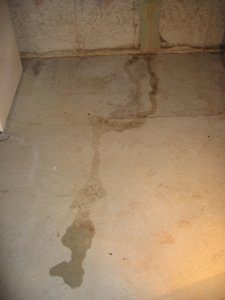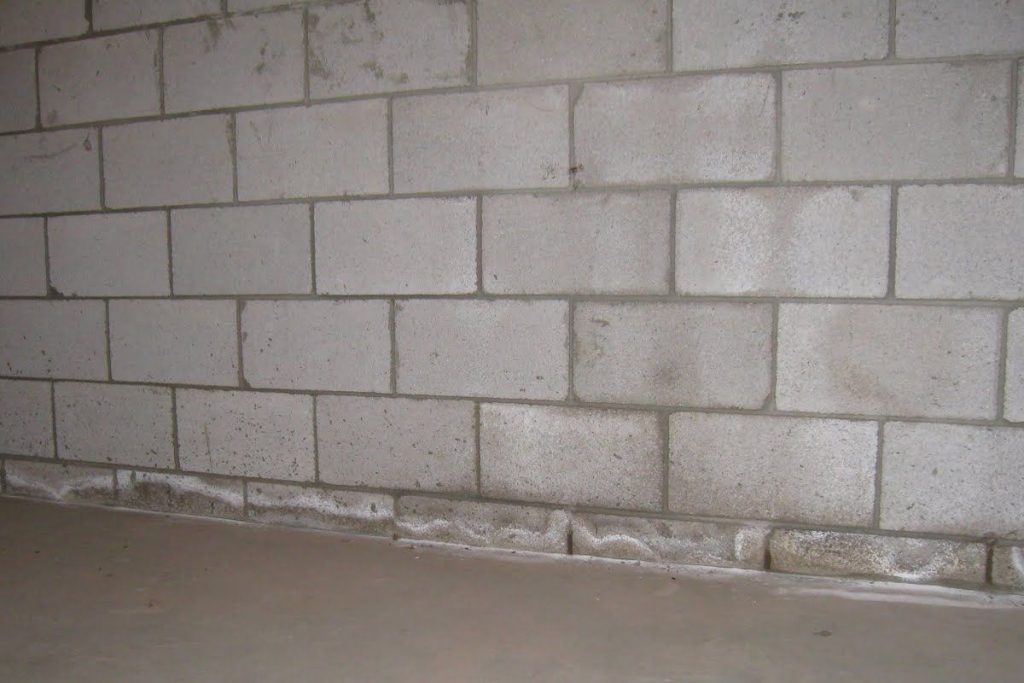
What Are The Best Basement Waterproofing Methods?
When you deal with a “Professional” Waterproofing Contractor, or you check out the websites of reputable basement waterproofing companies on the web, you will quickly realize that there are a limited number of professional waterproofing solutions for wet basements. The professional basement waterproofing solutions, offered only by companies that matter, will solve your wet basement problem(s) once and for all. These “professional” waterproofing methods, in no particular order, are as follows:
- Epoxy crack injection for the repair of foundation wall cracks;
- Polyurethane injection to repair basement wall cracks and for water-stopping of many other causes of wet basements;
- Exterior excavation and waterproofing to waterproof foundations, repair foundation cracks, and to replace weeping tile / drain tile;
- Interior perimeter drain installation to stop water seepage from concrete block / cinder block walls and provide drainage for water beneath the basement floor;
- Window well drain installation to prevent water from entering your basement from around and through basement windows; and
- Sump pump installation to provide a drainage point for water that is beneath your basement floor.
As the list above itemizes industry standard “professional” waterproofing methods, it follows that there are also “unprofessional” methods available on the market, with built-in technical deficiencies, that are used to stop or solve basement leak problems. We make the distinction between “professional” and “unprofessional” waterproofing methods because the unprofessional methods either do not work, do not last long, or cause significant deterioration of the foundation walls and/or related issues.
The following waterproofing methods are not recommended by AquaGuard Injection & Waterproofing® and most other professional waterproofing contractors:
Foundation Waterproofing Methods Which Are Not Professional
- Applying tar or coatings to the inside surface of a foundation wall as a sealer to keep water from seeping into the basement;
- Using hydraulic cement to stop basement leaks, without subsequently having the leaks repaired properly;
- Repairing less than the entire length of a foundation crack;
- Installing a rubber membrane over a crack in a poured concrete foundation wall, on the inside, and allowing the water to drain into the gravel layer beneath the basement floor slab;
- Excavating the exterior side of the foundation wall and applying a wooden board or styrofoam to the wall to effectively perform outdoor concrete wall surface sealing, even with the ample use of tar;
- Using crack injection kits for a do-it-yourself repair of basement wall cracks – the kits can work; however, you will be lucky if the DIY crack repair approximates the quality of a crack repair done by a qualified and experienced injection technician;
- Excavating the exterior side of the wall and sealing less than the entire crack length;
- Filling the surface of cracks from the inside or outside with caulking or similar sealing products;
- Tuck pointing horizontal mortar joint cracking in cinder block walls internally; horizontal mortar joint cracking is typically symptomatic of the requirement for structural reinforcement of the foundation wall;
- Creating shallow trenches in the basement floor to channel water from leaking basement walls, or water on the basement floor, to the floor drain; and
- Parging over the interior surface of a concrete block / cinder block wall, or foundation crack, to stop water seepage.
Are The Waterproofing Methods Of Successful Companies The Best?
Logically, one would assume that the best wet basement waterproofing solutions are those used by leading waterproofing contractors; however, if leading contractors are recommending and using different waterproofing techniques, there is certainly disagreement among them as to what the best waterproofing solutions are (not to mention the profitability of the service offering).
If you search through online directories, you’ll notice that there are large franchised companies that offer basement waterproofing services across the province or across Canada and / or the United States. It is common among some of these larger companies to sell and to exclusively use proprietary waterproofing solutions that have been developed in-house; furthermore, these companies claim that their business success proves that their methods are sound. It is beyond the scope of this page to discuss this issue further; however, any waterproofing method must fully take into account the body of science pertaining to hydrostatic pressure, drain laying practices, building construction techniques, etc., as well as the positively identified problem(s) that a homeowner is facing.
A professional waterproofing company with integrity will tell you that basement waterproofing repairs must be specific to a homeowner’s particular problem/situation and that some proprietary systems/solutions have inherent technical deficiences. After many years in the business we know that homeowners end up paying too much for “broad brush” and large scale proprietary waterproofing solutions without realizing it.
We have developed a table of basement waterproofing methods that lists the available waterproofing solutions for correcting wet basement problems. You will observe that there is usually more than one repair method available for any given cause of a leaky basement. We know that the basement waterproofing repair methods listed in the table are the best waterproofing solutions available today.
How To Pick The Best Basement Waterproofing Method
Over the years we have been asked repeatedly “What would you do if it was your basement?” As in life in general, there are no simple answers. In general, many factors must be taken into account before it is possible to determine the best method to use to waterproof a basement. Some of the factors are as follows:
- The foundation type;
- The age of the home;
- Whether the basement is finished or unfinished;
- The source of the leak into the basement;
- Your willingness to cut open the finished basement walls, or to remove them entirely;
- The presence of mold behind the finished basement walls;
- Your willingness to tolerate the inevitable landscaping damage associated with exterior waterproofing;
- Accessibility of the area to be waterproofed (both inside and outside);
- The location and presence of patios, walkways, driveways, decks, cabanas, air conditioning units, etc;
- The urgency of the situation; and
- Your basement waterproofing budget.
Given the factors listed above, as well as your particular circumstances, we believe that the waterproofing contractor and the homeowner or renovation contractor must work together to jointly determine the best and most cost effective wet basement repair solution.
AquaGuard Injection & Waterproofing® is committed to business integrity; consequently, we will work with you to determine the best course of action to take based on the problem(s) you are experiencing. We guarantee that you will be satisfied in your dealings with us; see what our customers have to say about AquaGuard Injection & Waterproofing®.
